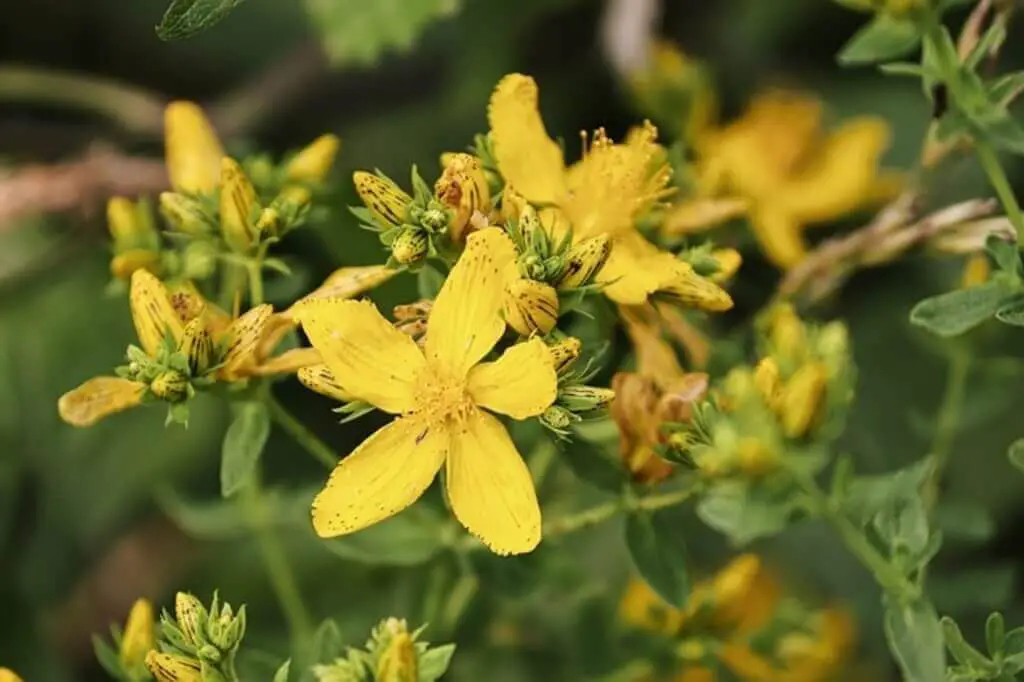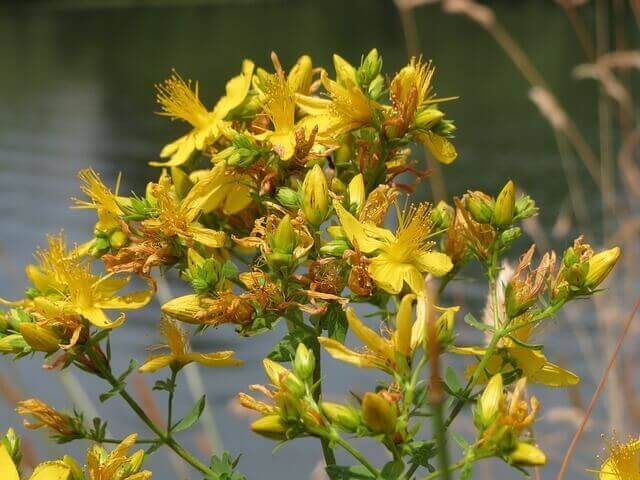How To Grow St. John’s Wort From Seed (Growers Guide)
Growing St. John’s Wort is one of the most rewarding things you can do for yourself and your family. There is nothing quite like growing a plant that is your very own, and this plant is St. John’s wort. If you want to get started growing st. Johns wort, there are two ways that you can go about getting started.
The first way is to buy the actual plant from a garden center, and then just start growing the plant. While this method will give you the maximum benefit from the herb, it is also the most expensive way to get started. The second way to go about growing st. Johns wort is with seeds.
Table of Contents
The History of St. John’s Wort
St. John’s wort is a natural herbal treatment for depression that has been used for centuries. It comes from the roots, leaves, bark, and twigs of the plant and is often referred to as St. John’s wort.
This herb has been used to treat depression, fatigue, migraine headaches, anxiety, and other ailments by people all around the world. Although it is not known why this herb works, it is well known that it does work by helping to produce serotonin, a key chemical in the brain.
Medicinal Uses of St. John’s Wort
Among the many medicinal uses of St. John’s wort, those that receive the highest praise are those for treating depression and anxiety. There are some very good reasons why this herbal supplement has been considered the most beneficial to those with depression and anxiety.
According to scientific studies, St. John’s wort is effective at increasing levels of serotonin in the brain, which has a great impact on mood and behavior. In addition, wort helps control symptoms of anxiety and depression by reducing the amount of adrenaline, which can cause symptoms of panic attacks.
It’s also important to remember that even though these claims have not been scientifically proven, most herbal supplements that contain plant extracts also have not been studied to verify their safety or effectiveness. This means that you could be putting yourself at risk if you take St. John’s wort without careful consideration of its side effects.
Also, it’s important to remember that most herbal supplements are not regulated by the Food and Drug Administration (FDA), so it’s always wise to do your research before taking any supplements, especially if you have specific health concerns or medications that may interact with the herb.
Germinating St. John’s Wort Seeds
When growing St. John’s Wort from seed, the best time to start germination is 6 to 8 weeks before the last frost. You can either start germination indoors, or you can directly sow your seeds in your garden.
Just place a few seeds in each spot about 1 cm (½”) deep. The soil needs to have to be at a fairly warm temperature of 70 F, and keep them away from bright light in order for them to germinate. Germination will take approximately 10 – 20 days. You will want to keep the soil moist during germination, by misting them with water in a spray bottle daily.
If you would like to start them indoors, then the best way to germinate your seeds, is by using a seed starter tray, and I like to combine this with a high quality seedling mix. Both these products are available on Amazon.
Seedlings will harden off and will be ready to plant after 3 weeks, and they can be planted outdoors in early-spring. If you decide to sow your seeds directly into your outdoor garden, you will want to make sure that you plant them 18 – 24″ inches apart
Selecting a Pot or Planter
Selecting a good pot or planter for your herb garden is one of the most important parts of gardening. Your herbs will be grown in a small, confined area, and they will need all the protection they can get.
Luckily, there are many pots available, from round containers to designer shapes, and even unusual ones made from precious gemstones. But no matter what type of container you choose, it’s important that you choose one that will hold your plants safely and comfortably.
When growing this herb, you will need a pot or planter, that has holes on the bottom for drainage, and a minimum size of 10 inches or larger, this will allow the plants more room to grow. What you must understand is that smaller pots do not give the St. John’s Wort as much room to spread out and get the nutrients that they need.
When selecting the size of your pot, I would recommend using a pot that is a minimum of 10″ or bigger in diameter. This will give your plant more than enough room, so that the roots can fully expand. I would recommend only planting one plant per pot, because it is very invasive and will spread out.
Whenever I grow St. John’s Wort, I like to use the Classic Garden Planter combined with a high-quality, well-draining soil from FoxFarm. You can purchase both of these products can be purchased on Amazon.
Soil Needed
Soil should also be moist and slightly acidic, has good drainage, and is well-suited to allow the roots to absorb as much water as possible. It should also be porous enough to allow the excess water and air to penetrate and get to the roots. These roots will provide your plants with all the moisture and nutrients they need to grow strong and healthy.
If you live in an area where the weather is often hot and dry, then the right kind of soil is essential. The proper amount of water, the proper amount of nutrients, and the proper pH levels are all things that you should take into consideration when deciding what is the best soil for growing herbs on your balcony.
Proper Watering
Determining the right watering frequency is very important. The frequency that you give the plants will depend on how fast they grow and how big they get. If you are growing your plant wort in containers, you should follow the same watering frequency that you would for a plant in the ground.
However, if you are growing the plant in a soil-based medium, such as a garden or a container, you need to check the moisture level often. Most plants will show signs of mildew and disease if they do not get enough moisture, so monitor the moisture levels. You can find your soil moisture level with a moisture meter.
In order to determine the correct watering frequency for your plants, you will need to know how much water your plant needs. St. John’s wort does require full sun or approximately 6 – 8 hours of direct sunlight each day. Although it is a perennial, it will grow quickly and reach a large height in just two years.
Because of this, it is an excellent choice for drought-resistant plants. If you have a lot of shade during the summer months, you should water your plant less frequently, going with a full to half water cycle, instead of going with a full cycle. For best plant health, you should water your plant every other day during the hot summer months.
Sunlight Requirements
This herb likes full sun and will grow well in an area that receives at least six hours of sunlight each day. When choosing the proper spot for your plant, you want to be sure that it gets indirect sunlight as well, because that will help it to thrive. If you choose a spot that has more than 6 hours of direct sunlight all day, the plant may end up getting burned, or at best, dying because it will not have the proper nutrients it needs.
Pruning
One of the ways in which St. John wort can cause problems for the gardener is by having too much or too little wood in between the main stem and the branches. If you prune your plants at the right times, you can avoid having too much wood between the branches.
Many people who try to prune their plants in the wrong way to end up with new branches growing out of the old ones. The correct way of pruning is to make sure that you do not chop up too much of the plant. Chunks will only serve to cause the plant to have an uneven look.
To determine how much to prune, you should first identify how large a branch is. Then you should determine how thick that branch is. If you want to increase the height of a plant, then you should prune it regularly. If you want to reduce the size of a plant, then you should prune it too.
You want to make sure that you do not cut the main stem too short or else it will become weak and prone to the winds. If you have a thicker stem, you can cut it towards the base but be careful not to cut off too much of the stem. Remove about 1/3 of the total height of the plant in late March. If you see any branches that are dead or damaged you will want to remove them as well.
Harvesting
When harvesting St John’s wort, you don’t need to cut back the entire plant; just remove approximately four to seven inches from the primary stem. Do not touch the smaller stems. Harvest the flowers from the plant, and then use your hands to separate the flower stems into three groups: stems and, leaves.
Companion Plants
St John’s Wort is the perfect companion to all herb plants. Just make sure that it has enough space to grow, by spacing them properly because it is an invasive plant.










